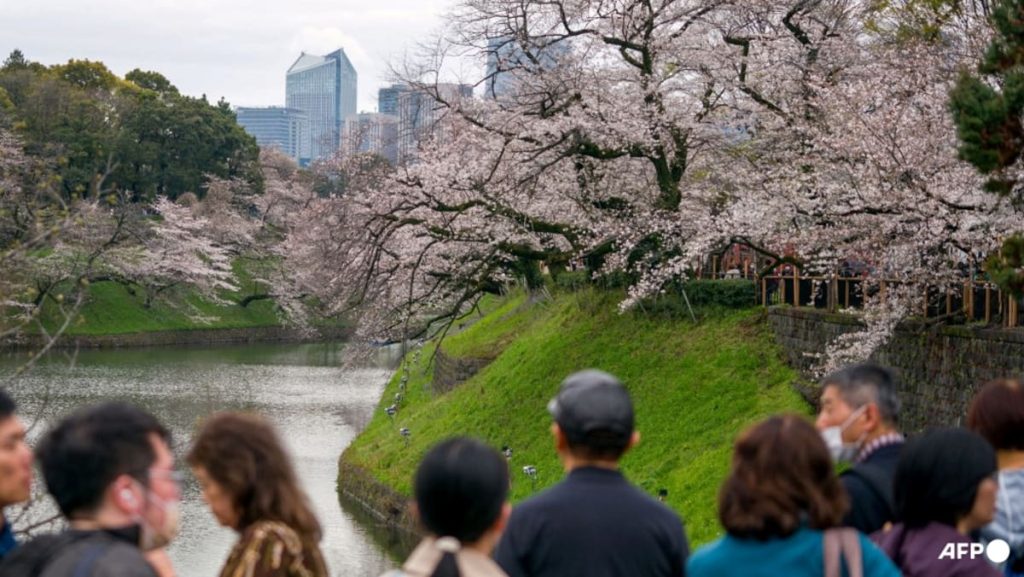The Japanese Meteorological Agency (JMA) announced that the country’s somei yoshino variety of cherry tree was in full bloom, four days later than usual. Cold weather conditions were cited as the reason for the delayed blossoms, but the JMA also warned that climate change was causing the petals to appear earlier over time. Last year saw sakura blooming on Mar 14, the earliest date recorded along with 2020 and 2021, with full bloom occurring on Mar 22. The agency noted that since 1953, the average start date for cherry blossoms to bloom in Japan had been gradually moving earlier by approximately 1.2 days per 10 years, attributing this to long-term temperature increases and factors like the urban heat island effect.
Tourism in Japan has been on the rise since the lifting of pandemic-related travel restrictions, with an international crowd gathered to witness the cherry blossoms on display. Kamilla Kielbowska, a traveler from New York, timed her third trip to Japan around the sakura season, arriving on Mar 23 in hopes of seeing the trees in full bloom. Despite initially finding the weather colder than expected and no blossoms in sight, Kielbowska eventually experienced the cherry blossoms at their peak, describing the sight as “marvellous” and “magical”. The popularity of cherry blossom season contributes significantly to Japan’s economy, with Professor Emeritus Katsuhiro Miyamoto estimating this year’s economic impact at 1.1 trillion yen, an increase from 616 billion yen in 2023.
The JMA’s observations suggest a long-term trend of earlier blooming cherry blossoms in Japan, which could be linked to rising temperatures and the urban heat island effect. The agency’s warning of climate change playing a role in the timing of the sakura season highlights the need for environmental awareness and action to mitigate these impacts. The anticipation and enjoyment of cherry blossom viewing is a significant cultural and economic phenomenon in Japan, drawing both locals and tourists to witness the beauty of the blossoms. Travelers like Kielbowska plan their visits around the peak bloom period, underscoring the importance of the sakura season in attracting visitors to the country.
The global interest in Japan’s cherry blossom season is evident in the international crowd that gathers to witness the blooms each year, bringing economic benefits to the country through tourism and related activities. The annual spectacle of the sakura draws visitors from around the world, adding to the vibrancy and cultural significance of the blossoms. With rising temperatures and changing climate patterns impacting the timing of cherry blossom blooms, stakeholders in Japan’s tourism industry and environmental organizations may need to consider strategies to adapt to these shifts. Despite the challenges posed by climate change, the beauty and mystique of Japan’s cherry blossoms continue to capture the hearts and imaginations of those who experience them.















